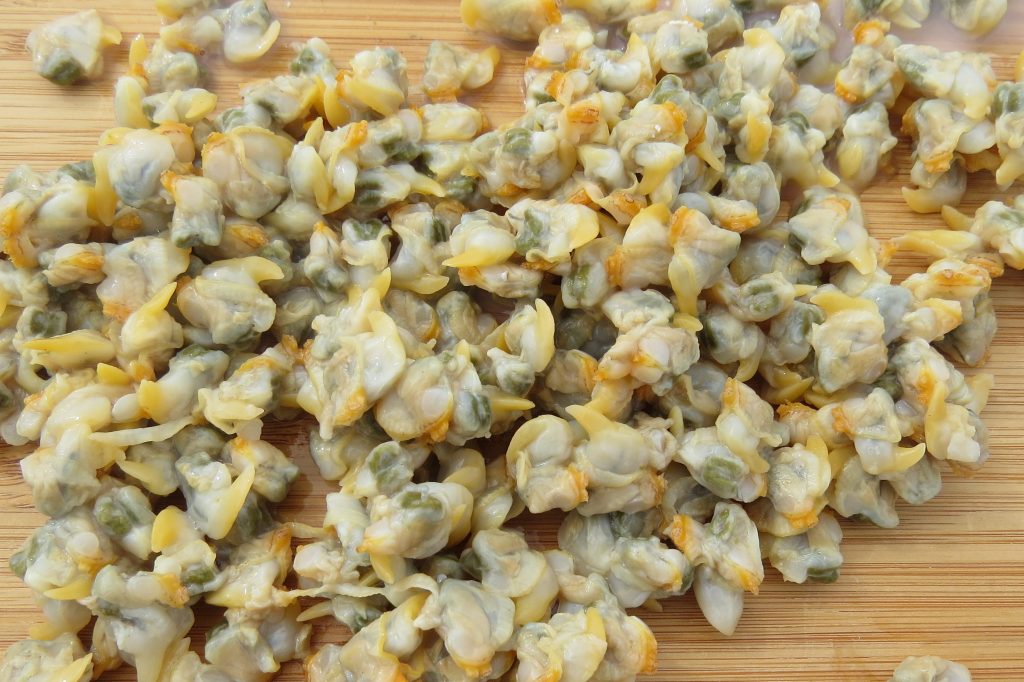Here’s the second part of a piece about some of the ingredients and dishes that have real tradition to them in Wales – or in some part of the country – but that are mostly or entirely forgotten here today. Most contemporary Welsh people would view these foods as alien, foreign foods, but in their time they were widespread and important parts of the food culture:
Rye bread
We tend to think of rye bread as belonging more naturally to the cuisines of eastern Europe than to anywhere in the British Isles. But until comparatively recently, rye bread was considered a familiar, Welsh staff of life. In many areas, particularly inland, mountainous parts where the poor soil made wheat cultivation unviable, the majority of the population depended on rye and oats for their subsistence. This was also true in neighbouring England but the practice survived much longer in Wales, perhaps in part due to the well-known cultural brogarwch – love of the familiar places and people. Evidence of this is strewn throughout Welsh literature, and reference to the cultivation of rye are also found in poetry:
“Bara rhyg yw’r ymborth amla
Ymenyn caws sy’n aml ynddi”/
Rye bread is the most frequent staple
Cheese and butter commonly [eaten] with it
This couplet is taken from a description of the notable features of Radnorshire (one of the highest-lying and coldest of the Welsh counties) in a long poem published in 1750. The poem also mentions the ‘abundant rye’ of Cardiganshire and notes the the grain was also associated with Montgomeryshire. As the couplet states, people eat rye bread much as we would expect – with cheese and butter. This is however before the Earl of Sandwich’s invention of the modern ‘sandwich’. The ability to buy cheaper white wheaten bread when wheat started to be imported at scale into the United Kingdom is what ultimately finished off rye as a bread-grain in Wales, although oat bread survived into the 20th century. Placenames is almost all that remains of this formerly widespread and important Welsh food: there are several places called ‘Bryn Rhyg’ or ‘Cae Rhyg’ (Rye Hill and Rye Field) dotted around Wales.
Asparagus
Accounts of asparagaus growing in Wales date back centuries. There is of course a Welsh word for this vegetable – esbarag – recorded in Wiliam Salesbury’s 1547 dictionary.[1] It is very likely in view of the linguistic evidence and the ‘discovery’ of asparagus amongst the English upper classes at this time that it was already being consumed at the tables of the wealthy landowners in Wales by this point, but by the end of the 18th century it had become fairly commonplace. We have detailed descriptions from this era, such as the diary entry for the 24th of April 1788 by one of the Llangollen sisters, who notes “Dinner, Roast Mutton, boiled pork, peas pudding and the first asparagus we cut this year.” More significantly perhaps, Walter Davies’ agricultural survey of 1815 contains descriptions of the produce of the market gardens of Llandaff near Cardiff, which was sold in markets across southern Wales – and one of these vegetables in its season was asparagus. And there seems also to have been a market for the vegetable in northern Ceredigion, as the surplus of the Nanteos estate sold locally between 1842 and 1844 included “seakale, broccoli, leeks, carrots, cucumbers, asparagus, rhubarb, lettuce, gooseberries, peas, cauliflower, potatoes, strawberries, cherries, beans, cabbage, artichokes, raspberries, blackcurrants, melons, apples, pears, damsons and onions.”
What is true of asparagus was also true of other vegetables that later fell out of favour. These include watercress (Anglesey and the Vale of Glamorgan), samphire, cabbage stalks (Pwll near Llanelli – the villagers were known as the ‘stalk people’ – gwyr y bonau – for their penchant for this vegetable) and white carrots (grown across the country – the later orange carrots were a Dutch fashion that developed in deference to the royal House of Orange.) There was also a not insubstantial Welsh tomato industry! By the 1890s, two tonnes were grown weekly during the season in Llysonnen in the Teifi valley – and these were sold and bought locally. The nonconformist Wales of the 18th and 19th centuries was perhaps a more varied place than many now realize – and this was no less true of vegetables than many other fields.
(We could also mention the history of fruit growing – but that has been done already in Apples of Wales).

Cockles and eggs
Finally, an example of Welsh ‘street food’:
‘Cockles and eggs, thin oatbread sliced
The Penrhyn girls’ butts looking nice’
Eggs and cockles fried together with a pinch of salt and pepper. Some people added bits of bacon two. Then serve hot between slices of oatbread. Available to buy on the street or at the markets along the coast between Pwllheli and Harlech. Who said historic Welsh foods were boring again?
[1] Though this word has now fallen out of use, and been replaced by the more modern Anglicism ‘asbaragws’.
Very interesting and informative, I would love to learn more.
Well written and concise, keeping the reader glued to the text.